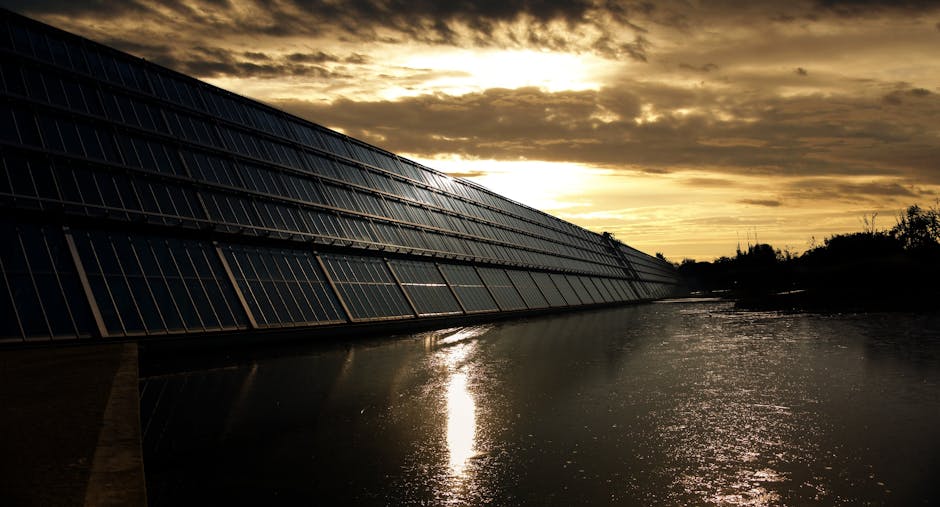Solar Panels For Barn Lights
As the world shifts towards sustainable energy solutions, solar panels have emerged as a popular choice for various applications, including barn lighting. Whether you own a farm, a stable, or simply a barn for storage, utilizing solar energy for lighting can be both cost-effective and environmentally friendly. In this article, we will explore the benefits of solar panels for barn lights, how to choose the right system, installation tips, and maintenance advice. Let’s dive into the world of solar-powered barn lighting!
Why Choose Solar Panels for Barn Lights?
Solar panels offer numerous advantages for barn lighting. Here are some compelling reasons to consider this energy solution:
- Cost Savings: Once installed, solar panels can significantly reduce or eliminate your electricity bills. This is especially beneficial for barns that require constant lighting.
- Environmentally Friendly: Solar energy is renewable and reduces your carbon footprint, making it a sustainable choice for lighting.
- Low Maintenance: Solar lighting systems typically require minimal maintenance, allowing you to focus on your farm operations.
- Easy Installation: Many solar lighting systems are designed for easy installation, often requiring no special tools or expertise.
- Energy Independence: By using solar energy, you become less reliant on the grid, which can be particularly advantageous in rural areas.
Understanding Solar Panel Systems
Before diving into installation, it’s essential to understand the components of a solar panel system. Here’s a breakdown:
- Solar Panels: These capture sunlight and convert it into electricity.
- Inverter: This device converts the direct current (DC) produced by the solar panels into alternating current (AC), which is used by most electrical devices.
- Battery Storage: Batteries store excess energy generated during the day for use at night or during cloudy days.
- Lighting Fixtures: These are the actual lights that will illuminate your barn, which can be LED or other energy-efficient options.
Choosing the Right Solar Panel System for Your Barn
Selecting the appropriate solar panel system for your barn lighting involves several considerations:
1. Assess Your Lighting Needs
Determine how much light you need and where you want to install the lights. Consider the following:
- What areas of the barn need lighting? (e.g., aisles, stalls, storage areas)
- How many hours of light do you require each day?
- What type of lighting fixtures do you prefer? (e.g., LED, fluorescent)
2. Calculate Energy Requirements
Once you know your lighting needs, calculate the total wattage required. This will help you determine the size of the solar panel system you need. Here’s a simple formula:
- Total Wattage = (Wattage of each light) x (Number of lights)
3. Evaluate Solar Panel Options
There are various types of solar panels available, including:
- Monocrystalline Panels: Highly efficient and space-saving, but typically more expensive.
- Polycrystalline Panels: More affordable but slightly less efficient than monocrystalline panels.
- Thin-Film Panels: Lightweight and flexible, but generally less efficient and require more space.
4. Consider Battery Storage
If you need lighting at night or during cloudy days, investing in a battery storage system is crucial. Consider the following:
- Battery capacity: Ensure it can store enough energy for your needs.
- Type of battery: Lithium-ion batteries are popular for their longevity and efficiency.
Installation Tips for Solar Barn Lights
Installing solar panels for barn lights can be a straightforward process. Here are some tips to ensure a successful installation:
1. Choose the Right Location
Solar panels need direct sunlight to function effectively. Consider the following:
- Install panels on the roof of the barn or in an open area with minimal shade.
- Ensure the panels are angled correctly to maximize sun exposure.
2. Follow Manufacturer Instructions
Each solar panel system comes with specific installation guidelines. Be sure to:
- Read the manual thoroughly before starting.
- Use the recommended tools and safety equipment.
3. Secure Wiring Properly
Proper wiring is essential for safety and efficiency. Here’s what to do:
- Use weatherproof connectors and cables to prevent damage.
- Keep wiring organized and secured to avoid tripping hazards.
4. Test the System
After installation, test the system to ensure everything is functioning correctly. Check:
- That all lights turn on and off as expected.
- The battery is charging properly during the day.
Maintenance of Solar Barn Lights
To keep your solar barn lights functioning optimally, regular maintenance is essential. Here are some tips:
1. Clean the Solar Panels
Dust, dirt, and debris can accumulate on solar panels, reducing their efficiency. Clean them regularly by:
- Using a soft cloth or sponge with mild soap and water.
- Avoiding harsh chemicals that could damage the panels.
2. Check Battery Health
Monitor the battery’s performance and replace it as needed. Signs of battery issues include:
- Reduced lighting duration.
- Visible swelling or leakage.
3. Inspect Wiring and Connections
Regularly check all wiring and connections for wear and tear. Look for:
- Frayed wires or loose connections.
- Corrosion on connectors.
4. Schedule Professional Inspections
If you’re unsure about the system’s performance, consider scheduling a professional inspection annually. They can:
- Identify potential issues




